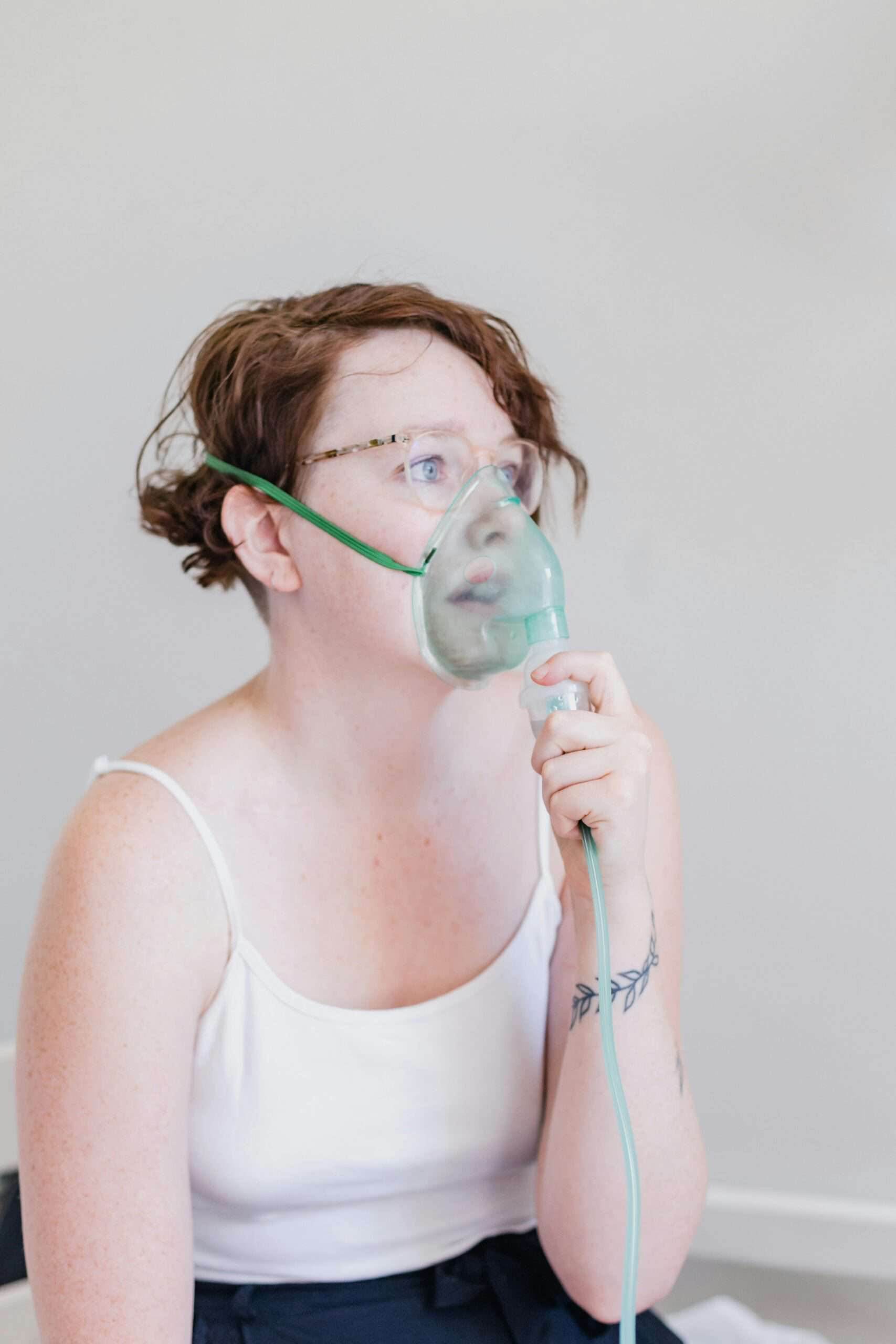Understanding Breathing OCD

Breathing OCD, a subtype of obsessive-compulsive disorder (OCD), manifests in intrusive thoughts and compulsions related to breathing and respiratory function.
Individuals with this condition often experience overwhelming fears increase anxiety and anxieties regarding their ability to breathe properly, leading to compulsive behaviors aimed at alleviating their distress.
In this exploration, we delve into the characteristics, triggers, and treatment modalities for breathing OCD and other OCD subtypes, aiming to shed light on this often misunderstood aspect of OCD and provide insights into effective management strategies.
What is Breathing OCD
Breathing OCD, also known as sensorimotor OCD or breathing-related OCD, is a specific manifestation of obsessive-compulsive disorder (OCD) where individuals experience intrusive and distressing thoughts, fears, and compulsions centered around their breathing and bodily sensations.
This subtype of OCD can manifest in various ways, but it commonly involves obsessions related to breathing difficulties, fears of suffocation, or heightened awareness of one’s breath and bodily sensation processes.
People with somatic OCD often find themselves preoccupied with concerns about their ability to breathe properly. They may constantly worry about not getting enough air, feeling as though their breath is restricted, or experiencing difficulty in breathing normally. These obsessive thoughts can be persistent and intrusive, leading to significant anxiety and distress.
Additionally, individuals with breathing OCD may fear suffocation or the sensation of being unable to breathe. These fears can be triggered by various situations or stimuli, such as being in crowded places, wearing tight clothing, or encountering environmental factors that they perceive as affecting their automatic bodily processes.
Moreover, individuals with breathing OCD may become hyper aware of their breath, constantly monitoring and analyzing their breathing patterns and sensations. This heightened consciousness of their breath can further exacerbate anxiety and reinforce the obsessive thoughts associated with breathing difficulties.
Common Obsessions in Breathing OCD
Common obsessions in breathing OCD can vary among individuals, but they often revolve around ocd symptoms related to breathing and respiratory function.
Some of the most common sensorimotor obsessions include:
Fear of suffocation
Individuals with breathing OCD may have intrusive thoughts about being unable to breathe or experiencing suffocation. They may worry excessively about not getting enough air or feeling as though their breath is restricted.
Hypervigilance of breathing
People with somatic OCD may become hyperaware of their breath, constantly monitoring and analyzing their bodily functions and sensations. This may also be known as conscious breathing. They may obsessively focus on the rhythm, depth, or frequency of their breath, leading to heightened anxiety and distress.
Fear of respiratory illnesses or conditions
Individuals with breathing OCD may experience unwanted thoughts about contracting respiratory illnesses or conditions such as asthma, COPD (chronic obstructive pulmonary disease), or lung cancer. They may constantly fear that minor symptoms or sensations are signs of a serious respiratory problem.
Concerns about breathing in harmful substances or toxins
Some individuals with breathing OCD may obsessively fear inhaling harmful substances or toxins in the air. This feared outcome prompts patients to go to great lengths to avoid environments or situations they perceive as containing pollutants, allergens, or other respiratory irritants.
Obsessive monitoring of air quality
People with breathing OCD may obsessively monitor air quality metrics such as humidity levels, air pollution indices, or pollen counts. They may engage in compulsive behaviors such as repeatedly checking weather forecasts or air quality monitors to assess potential threats to their respiratory health. These obsessive thoughts can manifest in various mental control and mental acts,
These obsessions can significantly impact daily functioning and quality of life for individuals with breathing OCD, causing distress, anxiety, and impairment in various areas of life. It’s essential for individuals experiencing these symptoms to seek professional help and support for effective management and treatment of breathing OCD.
Common Compulsions in Breathing OCD

Common compulsions in breathing OCD are behaviors or rituals that individuals engage in to alleviate their anxiety or to prevent perceived harm related to their breathing or respiratory function. These compulsions often serve as temporary relief but can reinforce the cycle of obsessive thoughts and compulsive behaviors.
Some common compulsions in breathing OCD include:
Checking breathing
Individuals may repeatedly check their breathing by counting breaths, monitoring their chest or abdomen movements, or using devices such as pulse oximeters to ensure they are breathing adequately.
Seeking reassurance
Individuals may seek reassurance from others about their bodily process or respiratory health. They may ask family members, friends, or healthcare providers to confirm that they are breathing normally or that there is no immediate threat to their respiratory function.
Avoiding triggers
Individuals may actively avoid stimuli or situations they believe could trigger anxiety or breathing difficulties. This could include avoiding reading or watching news stories about respiratory illnesses or avoiding conversations about breathing-related topics.
These compulsions can become time-consuming, distressing, and disruptive to daily life when left unchecked.
Breathing OCD Triggers
Triggers for breathing OCD are situations, thoughts, or stimuli that provoke obsessive thoughts and anxiety related to breathing or respiratory function. These triggers can vary among individuals but often contribute to the onset or exacerbation of symptoms associated with breathing OCD.
Some common triggers for breathing OCD include:
Physical sensations
Sensations such as shortness of breath, chest tightness, or changes in breathing patterns can trigger obsessive thoughts about respiratory health and provoke anxiety in individuals with breathing OCD.
Environmental factors
Certain environmental conditions or stimuli, such as pollution, allergens, smoke, strong odours, or poor air quality, may trigger fears about inhaling harmful substances or toxins and lead to heightened anxiety about bodily sensations.
Crowded or confined spaces
Being in crowded or confined spaces, such as crowded public transportation, elevators, or small rooms with limited ventilation, can trigger feelings of claustrophobia or suffocation and provoke hyper awareness about bodily processes.
Physical exertion
Engaging in physical activities or exercises that require increased respiratory effort can trigger fears of not being able to breathe properly or experiencing sudden breathing difficulties in individuals with somatic OCD.
Illness or health concerns
Experiencing symptoms of respiratory illnesses, such as coughing, wheezing, or congestion, or having a history of respiratory conditions can trigger obsessive worries about health and respiratory function in individuals with sensorimotor OCD.
Stress and anxiety
High levels of stress, anxiety, or emotional distress can exacerbate sensorimotor symptoms of breathing OCD and make individuals more susceptible to obsessive thoughts and fears related to breathing difficulties.
Previous traumatic experiences
Past experiences of trauma or incidents involving breathing difficulties, such as choking or near-drowning experiences, can serve as triggers for intrusive thoughts and fears related to breathing in individuals with sensorimotor obsessions.
Changes in weather or temperature
Changes in weather conditions, such as extreme heat, cold, humidity, or changes in air pressure, can trigger fears about how these factors may affect breathing or respiratory health in individuals with somatic OCD.
How to treat breathing ocd

Treating breathing OCD typically involves a combination of psychotherapy, particularly cognitive-behavioral therapy (CBT) with exposure and response prevention (ERP), and sometimes medication. Here’s an overview of OCD treatment approaches used for breathing OCD:
Cognitive-Behavioral Therapy (CBT):
Exposure and Response Prevention (ERP)
ERP is a specific form of CBT that is highly effective in treating OCD, including breathing OCD. In ERP, individuals are gradually exposed to situations, thoughts, or stimuli that trigger their obsessive thoughts and anxiety about breathing.
They then learn to resist engaging in compulsive behaviors (responses) that they typically use to alleviate their anxiety. Over time, exposure to these triggers helps reduce the intensity of obsessive thoughts and the need to feel anxious or to perform compulsive rituals.
Cognitive Restructuring
CBT also involves identifying and challenging irrational beliefs and distorted thoughts related to breathing and respiratory health. Through cognitive restructuring techniques, individuals learn to develop more balanced and realistic perspectives about their fears and concerns regarding breathing.
Medication
Selective Serotonin Reuptake Inhibitors (SSRIs): SSRIs, a class of antidepressant medications, are often prescribed to help alleviate symptoms of anxiety and treat ocd.
Mindfulness and Relaxation Techniques
Mindfulness-based techniques, such as mindfulness meditation, deep breathing exercises, and progressive muscle relaxation, can help individuals with somatic OCD develop greater awareness of their breath and learn to manage anxiety caused and stress more effectively.
Education and Psychoeducation
Learning about OCD, including its causes, symptoms, and treatment options, can empower individuals with breathing OCD to understand their condition better and actively participate in their treatment process. Psychoeducation can also help individuals and their loved ones recognize patterns of behavior associated with breathing OCD and provide support throughout the treatment journey.
Lifestyle Modifications
Making lifestyle changes, such as maintaining a healthy diet, regular exercise, adequate sleep, and stress management techniques, can contribute to overall well-being and complement the effectiveness of treatment for breathing OCD.
Conclusion
In conclusion, breathing OCD, or respiratory OCD, is a subtype of obsessive-compulsive disorder characterized by obsessions and compulsions related to breathing or respiratory function. Common obsessions include fears of suffocation, concerns about respiratory illnesses, and obsessive monitoring of breathing patterns. Compulsions may include checking breathing, performing breathing exercises excessively, seeking reassurance, and avoiding triggers.
Treatment for breathing OCD typically involves a combination of cognitive-behavioral therapy (CBT) with exposure and response prevention (ERP), medication such as selective serotonin reuptake inhibitors (SSRIs), mindfulness techniques, education, lifestyle modifications, and support groups. With proper treatment and support, individuals with breathing OCD can learn to manage their sensorimotor ocd symptoms effectively and improve their overall well-being. It’s essential for individuals experiencing symptoms of breathing OCD to seek professional help from mental health professionals to develop an individualized treatment plan.




